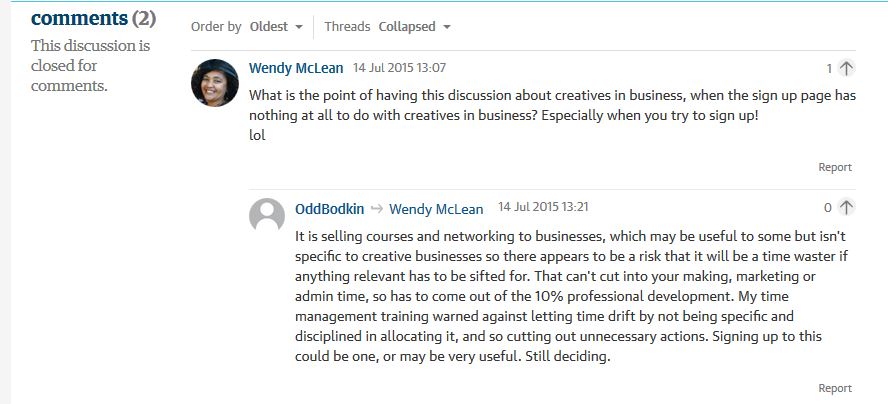By and large I keep things general and relatively low on direct criticism in my blog posts. However, since the goal of this blog is to engender better practices in arts organizations, I feel like I need to address a topic that is under discussed –writing effective, accurate job descriptions.
I see a lot of poorly written job descriptions but there was one that came across my Twitter feed last week that was particularly egregious. Even after a weekend, it still bothered me. I won’t name names, but I am going to pull some lines from the description rather than obliquely referencing it.
The job is for an executive director. The one line that left me incredulous was:
Responsible in developing and executing a management plan where within two years the role of Executive Director will spend 75% of time on fundraising.
To put that into context, 75% of your time is 3.75 days a week. Now you may say the executive director wouldn’t be doing this every week, some months would be more focused on fundraising than others but that is still 9 months out of the year. No matter how you slice it, 75% of a person’s time is still a significant amount of time. If the Executive Director takes 2 weeks vacation, that means leadership and other functions get the 2.5 months that are left.
The amazing thing is, this is listed as number 8 of 8 primary responsibilities. How can something that is expected to take up 75% of an executive director’s time be listed last in a list of primary responsibilities?
Now, I will admit if you read the whole description the fact the person will be expected to do a lot of fundraising finds its way into pretty much every line:
• The position works within a team environment and is responsible for ensuring strong working relationships across the arts and grantor community;
• Plays a central role in fundraising including individual donors, corporate sponsorships and writing and obtaining grants;
• Executing a strategic plan including: education and outreach goals; development of a donor engagement plan including annual giving, events, corporate and volunteer relations; establishment of a major gifts program; and execution of a technology initiative including both hardware and software;
• Financial oversight including drafting and meeting a detailed annual budget;
• Ability to create and nurture relationships with new and existing funders, as well as write and secure grants to underwrite new and ongoing initiatives and general operations;
It would be better if the 75% commitment to fundraising was listed first and then what followed illustrated how that would manifest itself.
But this is more than just a matter of poor formatting and organization of ideas. Overall, I felt like there was a misunderstanding of the role of an executive director and a large mismatch in expectations.
Among the qualifications listed of the applicants are:
• Bold and creative thinker to lead a talented staff;
• Demonstrate good governance, financial oversight, and best non-profit management practice;
• Comfortable with traditional and emerging media;
• Proven leadership skills identifying profitable opportunities and growth within the communities we serve;
• Preferred demonstrated passion for the mission of arts, arts education and outreach to all communities;
• Familiar with STEAM and the maker movement;
• Experience and enjoyment in managing multiple challenging initiatives concurrently;
There was one line in the expected qualifications about possessing fundraising skills, but the primary responsibilities are replete with references to fundraising and grant writing. The qualifications and responsibilities don’t seem to be in synch with each other at all.
The expectations outlined in the qualifications are in line with an executive director, the expectations expressed in the responsibilities are generally more appropriate for a development director.
Where is there time in the 1.25 days a week or 3 months not dedicated to fundraising to devote to leading the staff, focusing on good governance, identifying opportunities for increasing revenue and growing the organization, pursuing a mission of arts education and outreach?
One of the primary responsibilities listed does call for “examining and evaluating the role art plays in the communities we serve and subsequently installing new, progressive and sustainable arts initiatives,..”
I have a suspicion that they started with the qualifications list and then started brain storming about responsibilities. As that list came together, whomever was contributing came to the realization this person would have to work on fundraising a lot and may have arrived at the 75% number without thinking about how that really broke down time wise.
That said, if they really do need someone to devote 75% of their time to fundraising, it would be better to hire a separate development person who only focused on that. If there isn’t money to hire two people then either expectations need to change or priorities need to be evaluated. Does the organization have a greater need to raise money or for focused leadership?
If the answer is money, then hire the development person and the board needs to decide on some sort of ad hoc leadership structure shared between the other staff and board members.
An executive director definitely does participate and contribute to fundraising efforts, but theirs is a leadership position. That leadership can not be exercised 25% of the time and still meet the expectations that staff, funders, business people and community partners have for a person with that title.
A person spending 3.75 days a week/9 months of the year soliciting support is going to be making significant commitments on behalf of the organization. Who is going to be setting the standards, researching best practices, creating policies and leading the staff to meet those commitments? The executive director in the other 1.25 days/3 months?
Who is going to make sure those commitments are met, gather supporting data and materials and do the follow up reporting? That is part of the executive director’s 75% time attending to fundraising you say?
Okay, yeah, maybe, but in the process something is going to suffer. These tasks are time consuming and reporting requirements are increasingly out of scale with the funding received.
There are a lot of factors at play here. Many aren’t specific to this job description. The description just reflects a lot of poor practices that have permeated the non-profit arts. If there is an Everyman, much of this description is Everyjob.
The questions I raise are among those that really need to be considered when writing a job description. Every organization is different so it is close to impossible to borrow sections of other company’s job description and do a good job generating your own.
I am willing to give the organization the benefit of the doubt and believe (even hope) that this description (and other like it) doesn’t match the reality of the position and more attention needs to be paid in making it accurate.
If it does reflect reality, bless the person who takes the job.









Thanks for what you are doing to bring cultural change to the arts. It is so important to represent everyone.…